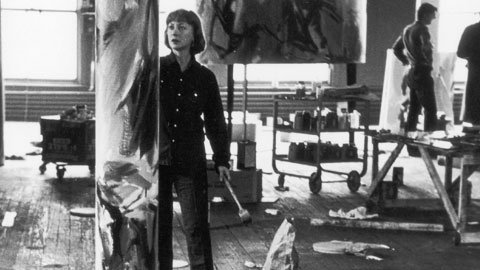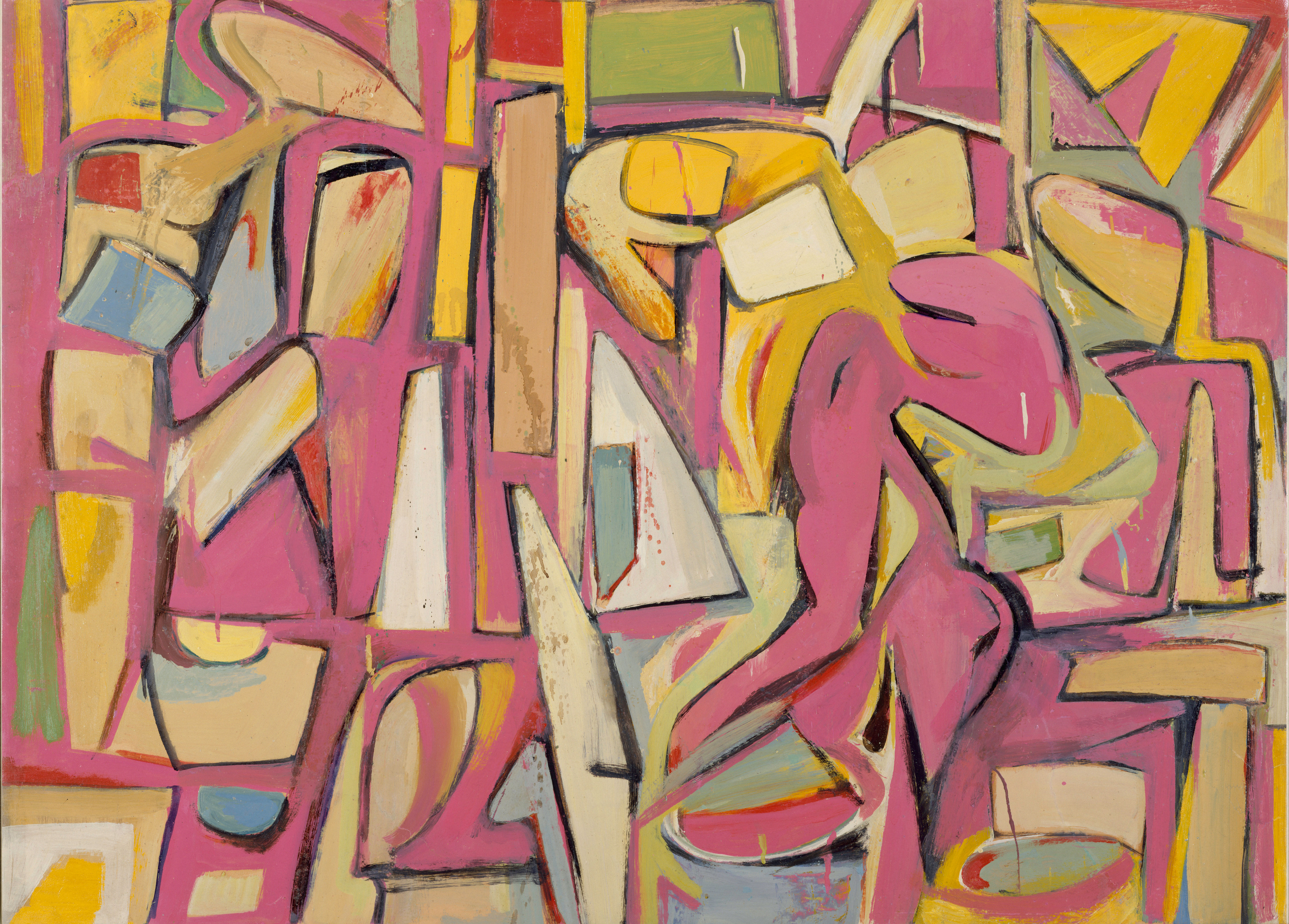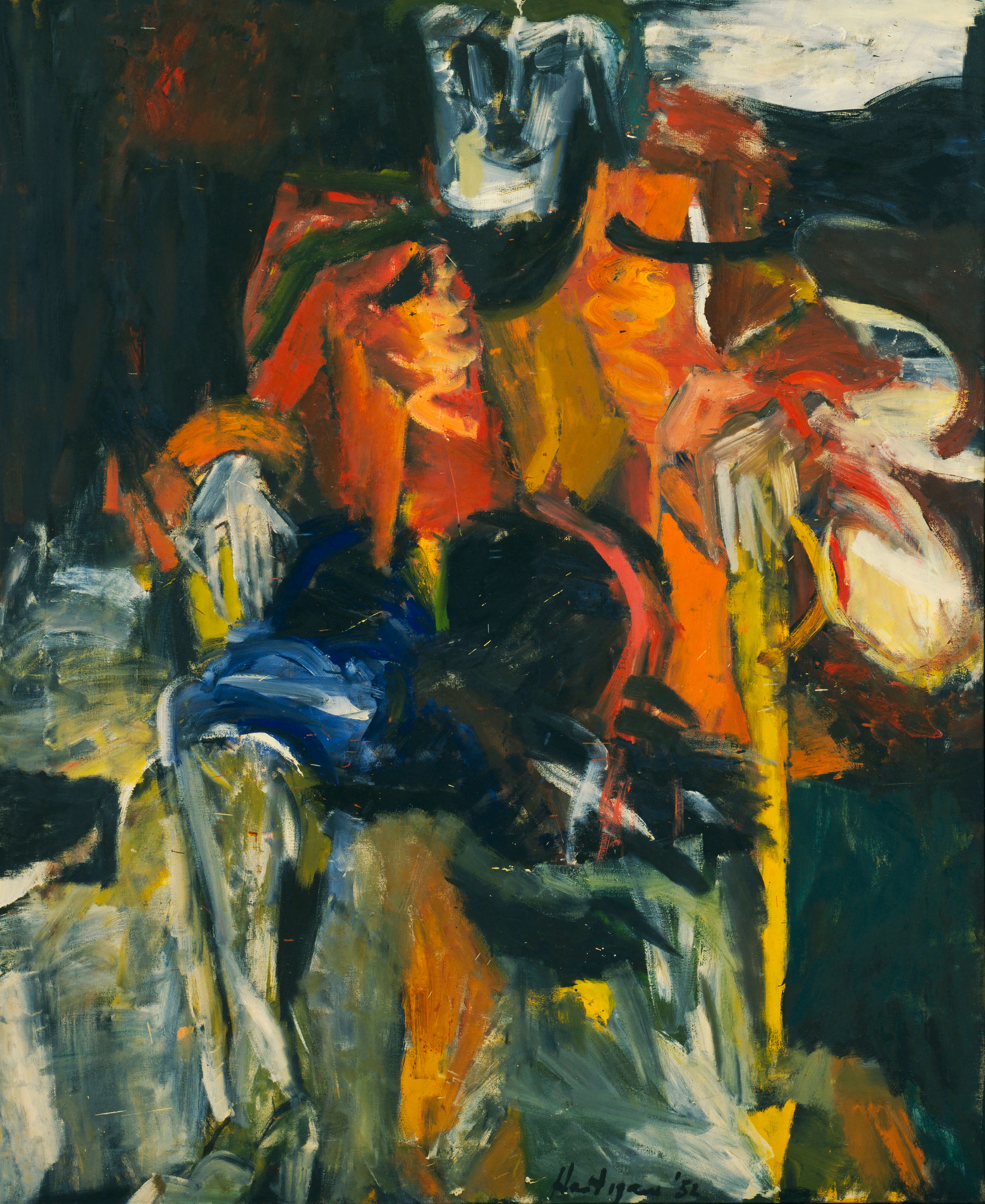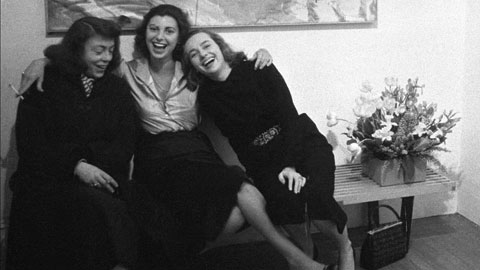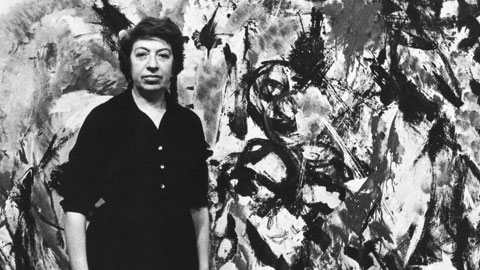It was also about the economic crisis and rising fascism. The artists, men and women, were completely involved in the Spanish Civil War, completely involved in this really, vehement dialogue about greater issues outside the studio.
By the ’40s, when the war was on, many of the men were gone. The Village was kind of desolate. That’s when Pollock and de Kooning first rose to the surface. They had medical problems and couldn’t go off to fight. So the men and the women who were still there formed this really tight community.
By ’48 and ’49, the American scene was really blossoming. The French artists, including Surrealists, who had been war refugees in New York and had been an inspiration, had all left. The men who had been fighting were back, and the men and women who had been on the scene since the ’30s were in their studios, literally creating a revolution. That’s when the huge breakthroughs started happening.
In ’49, the artists found actual homes. One was The Club, a loft on Eighth Street that the artists had just for themselves and their closest friends – including writers, composers and poets they loved, intellectuals they could learn from. That was really one vibrant scene. And then, in 1950, the Cedar Bar was discovered. That’s where they went to have fun, to blow off steam, act crazy until 4 in the morning. Problems that composers were facing were similar to those that the visual artists were facing and that poets were facing. It was this constant dialogue. People would go off to their studios, come back at night, meet up. The talk didn’t stop.
By the ’50s, the galleries were proliferating and that began to change the whole scene. By 1955, it was really becoming something else entirely.
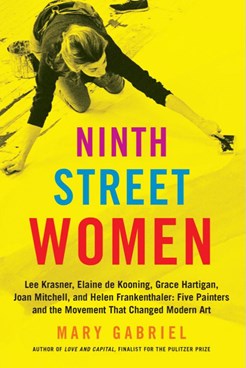
In the book, you quote Grace Hartigan saying, “Men have no objection to women as creators. It’s only when they’re all scrambling for recognition that the trouble begins.”
Yes, that was absolutely the case. It wasn’t just the women. There were a lot of men who were excluded too. Relatively few collectors were willing to take a chance on this art, and they focused on just a few painters. And so, the scene went from being a population of about 50 artists, let’s say, to a focus on a handful. And that changed everything. Then everybody else was competing for scraps.
It’s funny, at the same time that there were a few men who the market was focusing on, around post-1955, there were also a few women. Grace, Joan and Helen were selling, showing all over the country. In Grace’s case, all over the world. They were written up in Life Magazine, Newsweek, Glamour, Mademoiselle, Time, Saturday Review. They were well known to a mass audience. Part of the fascination was that they were women. But that ended before the fascination with the men did.
The reviews of them in the ’50s are very respectful, very serious. But then when you read the reviews of them in the early ’60s – in Helen’s case, she’s described as the daughter of a New York State Supreme Court judge and the wife of Robert Motherwell and then parenthetically she’s a painter. They describe her “boudoir” colors – it’s crazy how she is diminished. And Grace is kind of written out of history because she had the temerity to leave New York.
Traditionally, women aren’t considered the primary artists. Women can’t be geniuses. In the ’40s and the early ’50s, supporting each other, this group didn’t really ever even consider gender. But after collectors and galleries got involved, that old “gender versus genius” became a formula again and the men were the ones who were embraced and heralded.

